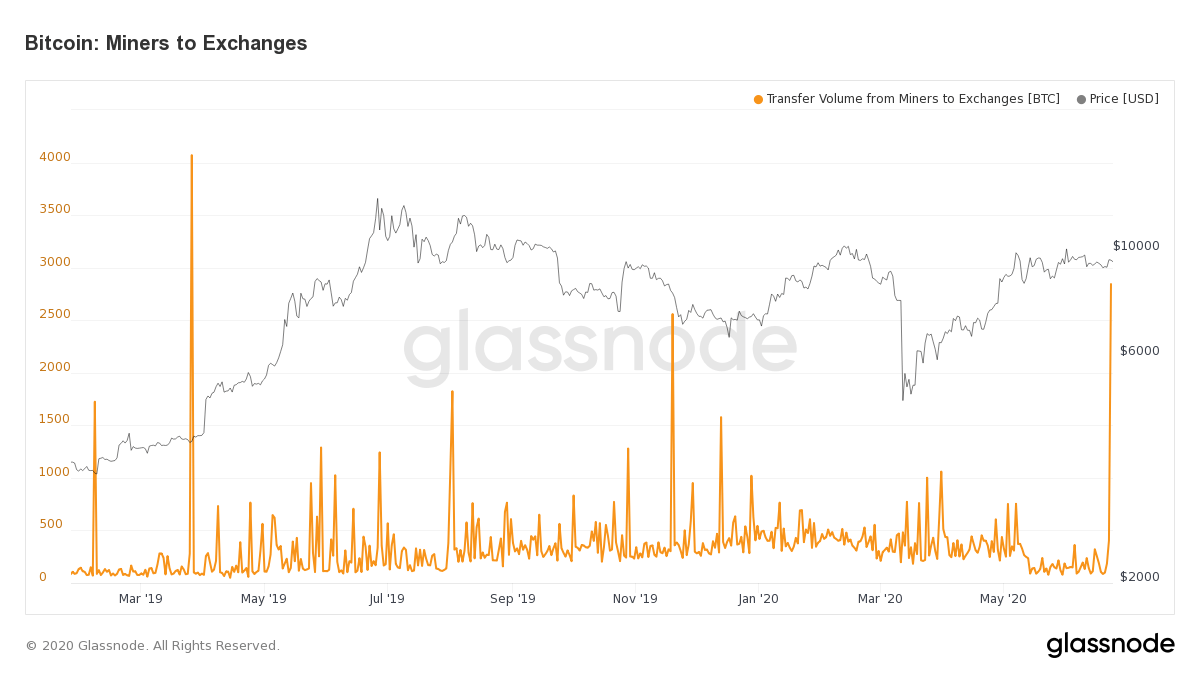 Bitcoin miner outflows are showing signs of a weakening BTC market
Bitcoin miner outflows are showing signs of a weakening BTC market Bitcoin miner outflows are showing signs of a weakening BTC market

Cover art/illustration via CryptoSlate. Image includes combined content which may include AI-generated content.
It was a long time coming. After Bitcoin’s May 12 halving event, many in the cryptocurrency community suggested weaker miners would move out of the market and leave much of the hash rate open to stronger players.
But, as the Bitcoin protocol is, the network’s hashrate adjusted itself negatively — meaning lower difficulty — allowing “weaker” entities to jump back into mining Bitcoin.
However, they seem to be running out of fuel. On-chain data shows lesser-known miners are readying to actualize their profits and presumably shut operations if research from a few sources is considered.
Second-largest outflow
Pointing out Bitcoin outflows from a couple of miners this week, research firm CryptoQuant tweeted:
7153 #BTC Outflows from HaoBTC and Poolin 20 hours ago.https://t.co/tXpJIhUC2f pic.twitter.com/QAbya5ZswU
— CryptoQuant (@cryptoquant_com) June 24, 2020
The data pinpoints two mining pools, HaoBTC and Poolin, to be moving large Bitcoin amounts. Poolin is one of the world’s biggest mining pools, shuffling with AntPool for the top place perpetually. It also saw its second-largest outflow this week — with both pools accounting for 7,153 BTC, about $65 million at current prices, as of June 25.
As per data on BTC.com, Poolin has mined over 158 blocks in the past week, second only to F2Pool’s 187. HaoBTC does not feature on the top-20 list.
Data shows the public Bitcoin accounts of popular crypto-exchanges did not display a marked increase in total holdings — indicating the funds were likely sold in an over-the-counter (OTC) Bitcoin transaction. Asia is home to many such firms, such as OSL in Hong Kong and QCP in Singapore.
Despite the above, metrics on Glassnode show about 2,900 BTC — tracked from individual miner wallets — was deposited to cryptocurrency exchanges:

Outflows precede drops
As CryptoSlate reported earlier this month, miner outflows have been declining after an initial surge in the week following the Bitcoin halving. At the time, publically-available data showed miners were, for a short while, selling more Bitcoin than they earned, presumably to cover costs and protect against future risk.
Meanwhile, some traders on Twitter said the miner outflows contributed to bearish cryptocurrency prices on June 25. At the time of writing, Bitcoin is down 4 percent, while ETH has declined 6 percent:
Big spike in miner's outflows overnight.
Second biggest since #Bitcoin hit $10k.
I'm expecting a whole lot of selling, starting real soon. pic.twitter.com/RfYfYijZ8P
— Cole Garner (@ColeGarnerBTC) June 23, 2020
Commentators claim miner outflows have preceded massive price drops in the past. However, no statistically significant data or metric necessitates this claim.
In early-June, Glassnode data on Miner Outflow Multiple (MOM) for Bitcoin, which calculates the outflows for the currency from miner pools, showed relevant values were reaching a new one-year-low, considering the metric’s 365-day moving average.
Fund manager Tuur Demeester tweeted at the time:
Healthy bitcoin miners are hodling, and struggling miners have little BTC left to sell. Bullish. https://t.co/MFjaILwLlL
— Tuur Demeester (@TuurDemeester) June 5, 2020



 CoinGlass
CoinGlass 




































































































 BTC
BTC